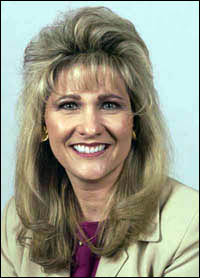By Seamus McGraw
(Contined)
Suspicion mounts
One of the things that made them suspicious was the fact that just days after Kathy Augustine's death, Higgs made a dramatic but unsuccessful suicide attempt. Authorities privately wondered how a nurse, a man trained in the mechanics of death, could botch the attempt, and questioned whether it was possibly a ploy to remove suspicion from him.
 |
| Kathy Augustine |
Their suspicions were peaked when they learned that Higgs had served three years earlier as critical care nurse for Augustine's late husband. Charles Augustine, an otherwise healthy 63-year-old, had suffered a stroke, but was believed to have been well on his way to recovery when he died suddenly. No autopsy was performed, and his death was listed as the result of unanticipated complications from the stroke.
What made authorities even more suspicious was the fact that three weeks after Charles Augustine's death, Higgs and Kathy Augustine flew to Hawaii where they were married.
 |
| Charles Augustine |
Authorities in Las Vegas did a thorough autopsy on Kathy Augustine's body and sent tissue samples to the FBI, where, months later, test results indicated that there were traces of succinylcholine in her system, a powerful paralytic drug, available primarily in hospitals and used primarily to deaden muscles and stop breathing during surgical procedures. The drug also has one other use — in several jurisdictions it the second of three drugs listed in the protocol for executing death row inmates.
That was enough to propel Higgs to the top of the cop's suspect list.
But there were problems.
Next Page
Previous Page
See Crime Library Feature Story on The Rose Petal Murders
For more daily crime news

 default
default increase
increase decrease
decrease


 email
email print
print